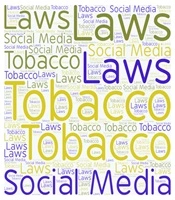Dear Editor,
The World Health Organization (WHO) estimates that smoking kills over 8 million people annually, including 1.2 million deaths due to secondhand smoke exposure. Secondhand smoke is the smoke exhaled by a smoker or released from a cigarette or other tobacco product (1). With over eight million deaths worldwide, the tobacco epidemic is one of the worst public health crises ever seen (2). There have already been roughly 100 million tobacco-related fatalities this century, and by 2050, there will be an additional 250 million (3). Current smokers will cause the great majority of deaths that will occur before 2050. Limiting tobacco promotion on social media is crucial because, unlike traditional one-way media (such as radio, television, and newspapers), social media offers the tobacco industry a potent interactive tool for luring younger consumers (4).
Flexible and updated regulations to keep up with the latest tobacco marketing on social media could be one way to limit tobacco advertising on these platforms (5). Iran should consider cross-border advertising of tobacco products in future regulations. Social media provides the tobacco industry with the best platform to circumvent prohibitions on tobacco advertising by making it easy to create, share, and view promotional content. Influencers can interact with a global network by liking and commenting on each other's posts and promoting each other's material. As a result, a worldwide network of tobacco promoters may be established, exposing their followers to tobacco-related content across international boundaries. A global effort will be needed to stop the tobacco industry from exploiting this loophole (6).
Tobacco-related content on social media should likewise have warning or informational labels. Furthermore, platforms should explicitly state their policies that forbid adolescents from accessing promotional content and clearly describe their policies that prohibit the sale and advertising of tobacco products through direct and indirect means (such as influencers in product marketing). Tobacco use is forbidden (6). Researchers and regulators need to review the tobacco policy landscape on social media platforms because policies are subject to change.
To minimize exposure across all platforms, tightening the regulatory framework surrounding algorithmic exposure issues with tobacco-related information and platform-specific rules and activities will be essential. Research indicates that platform algorithms are designed to gradually expose users to similar material. Furthermore, individuals who initially come across material about tobacco use might subsequently encounter even more of it. Social media companies are now required by the Transparency Act to reveal the data they use to operate their algorithms and how they use them. The proposed legislation will assist in shielding vulnerable populations, including adolescents, from being targeted by hazardous information, such as tobacco advertising, by holding all social media sites accountable.
